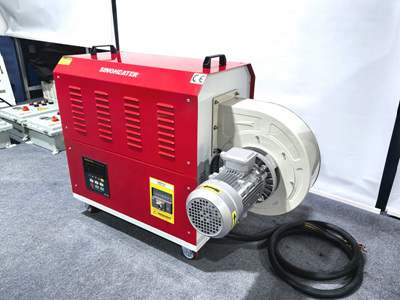After the hot air blower is used in a strong wind environment, a comprehensive inspection of the windproof device is required to ensure the stability and safety of the equipment. The following are the specific inspection points:
Key points for inspecting windproof devices
Fixed bracket and installation structure:
Stability of the support: Check whether the support of the hot air blower has become loose or deformed due to strong winds. Ensure that the connecting bolts between the support and the ground or wall are tight and not loose. If necessary, re-tighten or reinforce the support.
Stable foundation: Check if the installation foundation of the hot air blower has any settlement or cracking. If there are any problems, they should be repaired in time to prevent the equipment from tilting or collapsing.
Windbreak plates and protective nets
Integrity of the baffle: Check whether the windproof baffle is damaged, deformed or fallen off to ensure that it can effectively prevent strong winds from directly impacting the equipment.
Protective net status: Check if the protective net is clogged or damaged, clear the blockages, repair or replace the damaged protective net, and prevent foreign objects from entering the equipment interior.
Air inlet and outlet:
Air inlet protection: Check whether the wind shield at the air inlet is intact to ensure there is no debris blocking it, preventing strong wind from flowing back and affecting the normal operation of the equipment.
Direction of the air outlet: Confirm whether the direction of the air outlet has shifted due to strong winds. If necessary, adjust it to a safe direction to prevent hot air from blowing directly on people or flammable materials.
Electrical Systems and Connections
Cable fixation: Check if the cables have become loose or worn due to strong winds, and ensure they are firmly fixed without any exposed or damaged parts.
Terminal blocks: Check if the terminal blocks are loose. Tighten all terminal blocks to prevent poor contact or short circuit caused by vibration.
Overall stability of the equipment
Vibration test: Manually shake the equipment to check for any abnormal shaking. If the shaking is obvious, further inspection of the bracket, foundation and connecting components is required.
Windbreak measures assessment: Evaluate the effectiveness of existing windbreak devices. If necessary, add windbreak ropes, reinforce brackets or adjust the installation positions of equipment.
Maintenance and repair after inspection
Tightening and reinforcement: Tighten all loose parts, and repair or replace deformed or damaged parts.
Cleaning and lubrication: Remove dust and debris from the surface and interior of the equipment, lubricate moving parts, and ensure smooth operation of the equipment.
Functional test: Restart the device, observe its operating status, and check for any abnormal noises, vibrations or excessively high temperatures.
preventive measure
Regular inspection: Establish a regular inspection system, especially before and after the strong wind season, to conduct a comprehensive inspection of the windbreak devices.
Enhanced protection: When used in strong wind environments, temporary windproof measures such as windbreak ropes and windbreak boards can be added.
Personnel training: Provide training to operators to enhance their awareness of the safe use of equipment in strong wind conditions.




